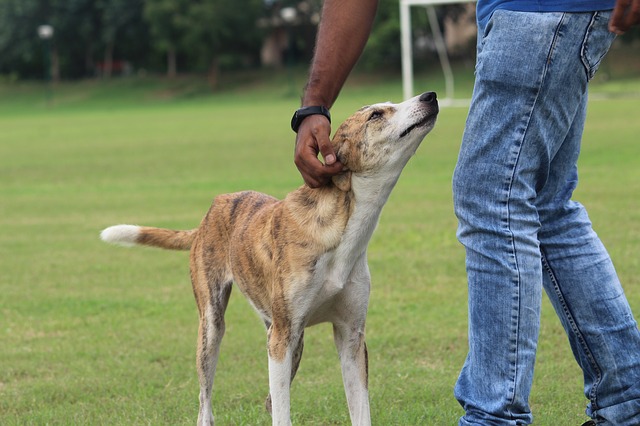Scientists have long believed that prehistoric man domesticated prehistoric dog sometime between 10,000 to 30,000 years ago, but as they continue to discover and study remains, they learn more and more about the bond that humans and dogs share.
It’s been known for some time that man and dogs developed a mutually beneficial relationship, where the two helped each other work and survive. Man trained dog to hunt and protect, and in return, kept him fed.
But researchers studying prehistoric remains have found new evidence that shows that the relationship between man and dog went much deeper than just a relationship based on survival.

Remains dating back to the Paleolithic era, about 14,000 years ago, were buried together in a single grave in what is now Bonn, Germany. In the grave were the bones of a man, woman, and a dog. Though the bones were discovered in 1914, but newer technology allows researchers to read further into the remains than they could at the time they were found.
By studying the bones and teeth of the dog, scientists have determined that it was about 28 weeks old when it died – but had contracted canine distemper at around 19 weeks. Liane Giemsch, curator at the Archäologisches Museum Frankfurt, believes that this is a sign that this dog was more than just a working companion – he was extremely well-loved and well-cared for.
“Since distemper is a life-threatening sickness with very high mortality rates, the dog must have been perniciously ill between the ages of 19 and 23 weeks. It probably could only have survived thanks to intensive and long-lasting human care and nursing.”

Distemper is a painful disease for any dog who contracts it. Even now with all our advances in veterinary medicine, distemper is still highly contagious and un-curable. Researchers involved in the study of these remains believe that the dog would have suffered periods of extreme illness, lasting 5 to 6 weeks at a time. He would have experienced vomiting, fever, diarrhea, and seizures among other symptoms.
However, this dog survived nearly 10 weeks after he became ill. They believe this could only be possible with love and care given by the people responsible for him. He would have needed to be kept warm, clean, hydrated and fed – things he would not have been able to do on his own while sick.
So, not only does our working relationship with dogs go back thousands of years, so does our love for them! Next time someone who doesn’t understand your love for your dog turns up their nose when you tell them how much you spend on vet visits, you can tell them it’s in your DNA!
H/T: National Geographic
